When investing in a high-value luxury item such as a 1-carat diamond ring, it’s important to ensure you’re getting both excellent value and a stunning gemstone. That’s why many diamond buyers often wonder: How large is a 1-carat diamond?
A 1-carat diamond has an approximate diameter of 6.5 millimeters. However, size alone should not be the sole factor influencing your decision when purchasing a diamond of this weight.
In this comprehensive article, we will provide you with all the essential information you need to know before choosing a 1-carat diamond for your ring. So, let’s begin without any further delay.
Diamond Price Chart
DESIGN YOUR OWN ENGAGEMENT RING: START WITH A SETTING OR START WITH A DIAMOND. IT’S REALLY UP TO YOU!
| Shape | Top Quality D/E, FL/IF | Our Recommendation G/H, VS2/SI | The Lower End I/J SI1/SI2 |
|---|---|---|---|
| Round | $23,200 | $7,710 | $6,100 |
| Princess | $15,200 | $6,280 | $5,000 |
| Cushion | $15,790 | $5,870 | $3,730 |
| Emerald | $16,050 | $7,760 | $5,140 |
| Oval | $18,950 | $7,390 | $5,760 |
| Pear | $17,800 | $7,580 | $5,710 |
| Marquise | $21,320 | $9,210 | $5,150 |
| Radiant | $20,100 | $7,020 | $4,100 |
| Asscher | $19,610 | $7,720 | $4,360 |
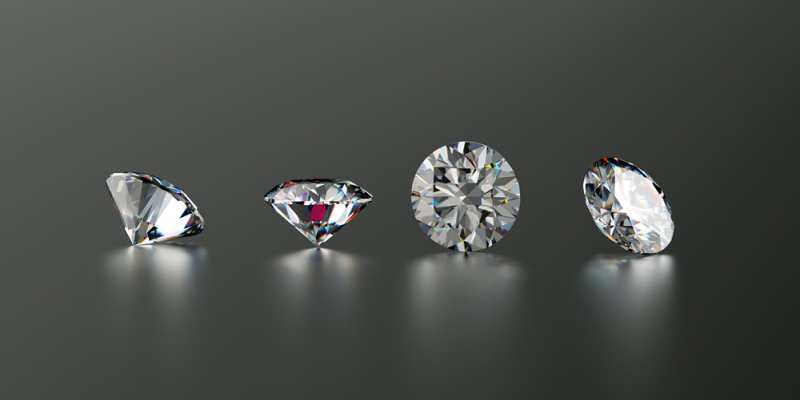
Diamond Carat Size Doesn’t Exist
The concept of diamond carat size can often be misunderstood. Many people mistakenly equate diamond carat with diamond size. However, by understanding some basic principles, you can avoid this confusion.
Diamond carat refers specifically to the weight of the stone, without directly influencing factors such as the surface area of the table, the depth of the diamond, or other shape-related features. It’s important to note that a higher carat weight does not necessarily translate to a larger diamond.
Conversely, a diamond’s size pertains to its visual appearance. For example, a Marquise cut diamond may appear larger than a round brilliant cut diamond in the same carat range due to its elongated shape.
The size of a diamond is influenced by various components, including depth and surface area. As a result, two diamonds with the same carat weight can exhibit different sizes based on the quality of their cut and the design of their shape.
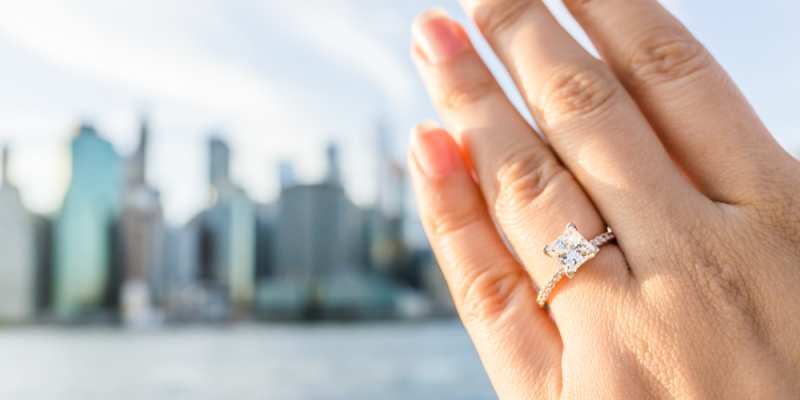
How Much Is A 1 Carat Diamond Ring?
Typically, the price range for a 1-carat diamond falls between $1,700 and $12,000. However, several factors come into play when determining the price, such as the cut quality, shape, color, and clarity grades.
The quality of the cut has a significant impact on both the price and overall beauty of a 1-carat diamond.
While carat is a measure of weight and not directly indicative of a diamond’s size, it is often associated with size and influences the diamond’s price. A 1-carat diamond weighs approximately 200 milligrams, which is equivalent to about a quarter of a raisin in weight.
It’s important to note that diamond prices are quoted per carat. For example, a 0.50-carat diamond with a price of $1,300 per carat would have a total price of $1,300 multiplied by 0.50, resulting in $650.
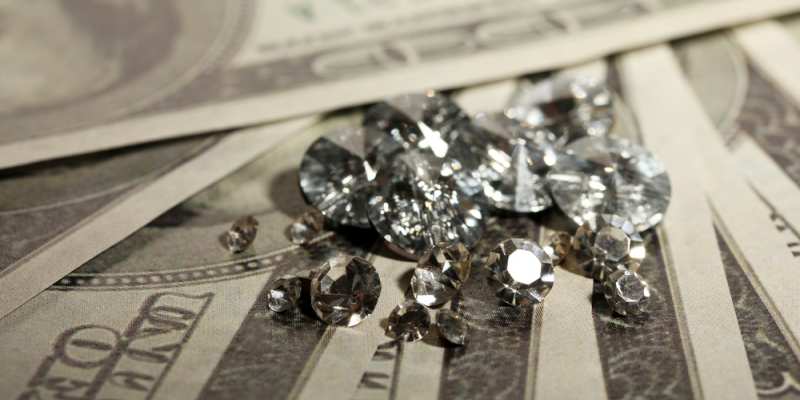
1-Carat Diamond Price Break Down
As you venture into higher carat weight categories, diamond prices per carat tend to rise significantly.
The increase in diamond prices is exponential, driven by the higher weight value of the diamond and the higher price per carat associated with larger carat weight categories. For example, a 1-carat diamond may be priced at $4,600 per carat, while a comparable 2-carat diamond could be priced at $7,300 or more per carat.
It’s important to note that these price variations occur within specific carat weight categories rather than being a continuous upward trend. The diamond market is influenced more by emotional factors than logical reasoning, as diamonds are retail products.
While it may seem tempting to search for a diamond that falls just below the next carat weight category, like a 0.90-carat stone, it doesn’t necessarily offer significant cost savings. In fact, the popularity of such diamonds has increased their prices, minimizing potential savings.
Subjectivity plays a significant role in diamond pricing, as emotions are closely intertwined with the diamond industry. This subjective nature is also why there is a significant presence of poorly cut diamonds in today’s market.
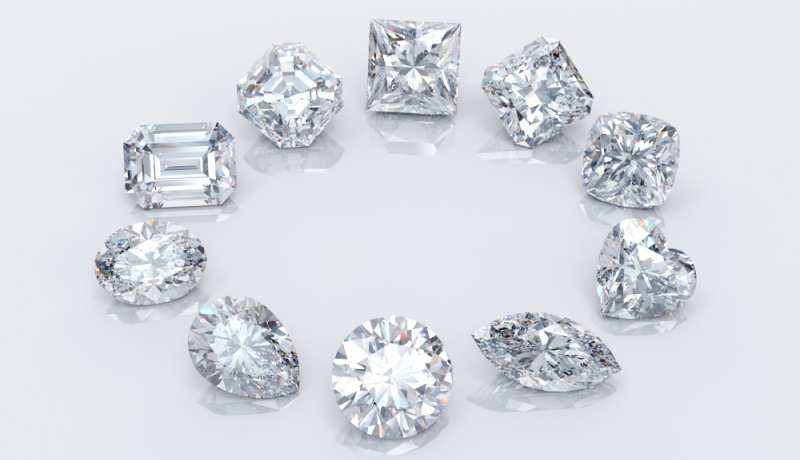
1-Carat Diamond Shapes
The choice of diamond shape for a well-cut 1-carat diamond is primarily a matter of personal preference and aesthetic appeal. Regardless of the shape chosen, when paired with a beautiful ring setting, it will create a stunning overall look.
However, if size is a concern, it’s worth noting that different diamond shapes can vary in their surface area, which can affect how large the diamond appears. This variation is primarily due to differences in table sizes among the different shapes.
To provide a better understanding of the surface area differences, refer to the chart below, which illustrates the variations among different diamond shapes.
| Diamond Shape | Table Surface For 1 Carat |
|---|---|
| Round Brilliant Cut | 6.5*6.5 millimeters |
| Princess-Cut | 5.51*5.51millimeters |
| Asscher Cut | 5.61*5.61 millimeters |
| Emerald-Cut | 6.68*4.95 millimeters |
| Oval-Shaped Diamond | 8.12*5.41 millimeters |
| Pear-Shaped Diamond | 9.05*5.45 millimeters |
| Radiant Cut | 5.78*5.78 millimeters |
| Heart-Shaped Diamond | 6.56*6.56 millimeters |
| Marquise Diamond | 10.38*5.19 millimeters |
| Cushion Diamond | 5.83*5.83 millimeters |
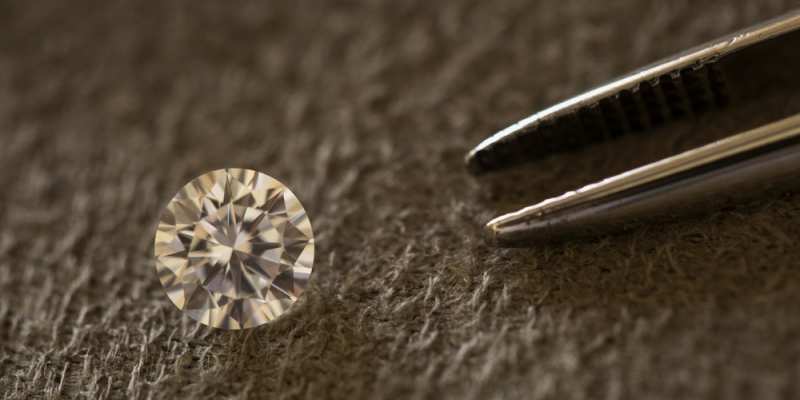
Tips For Buying A 1 Carat Diamond Ring
For those seeking the most visually stunning 1-carat diamond ring, this section is tailored to your needs. Read on to discover valuable insights!
Find the Perfect Style for Your Ring
Before diving into the search for your ideal diamond centerpiece, it’s beneficial to have a general idea of your desired ring style. Allocating a portion of your budget to the ring itself while allowing for a higher budget for the diamond can be a strategic approach.
When it comes to a 1-carat diamond ring, almost any style will exude beauty. However, certain styles have a captivating allure that sets them apart. Consider the following standout options:
- Halo ring setting: Surrounding the center stone with smaller diamonds creates the illusion of a larger diamond with enhanced sparkle.
- Three-stone ring setting: Incorporating smaller side diamonds alongside the center stone adds visual impact and creates the perception of a larger diamond.
Additionally, take into account the choice of precious metal for your ring. While different gold colors have minimal impact on price, opting for platinum due to metal allergies can increase the overall cost of the ring.
Explore Different Diamond Shapes
If you’re open to exploring beyond the classic round brilliant cut, be sure to consider other captivating diamond shapes. At the 1-carat mark, fancy-shaped diamonds often offer significant cost savings compared to round brilliants, with prices up to 42% lower.
Popular choices among fancy-shaped diamonds include:
- Princess cut: This square-shaped diamond is a beloved favorite for its timeless appeal.
- Cushion cut: Known for its romantic and vintage charm, the cushion cut has enduring popularity.
- Pear and oval cuts: These trendy shapes create an elongated appearance on the finger, making it appear slimmer and longer.
Choose wisely as you embark on your quest for the perfect 1-carat diamond ring, tailored to your personal preferences and style.
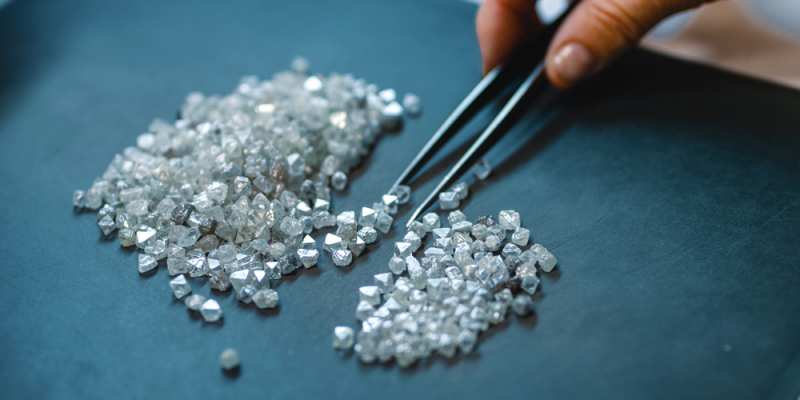
Limit Your Options To The Best Cut Diamonds
In today’s market, there is an abundance of diamonds to choose from, ensuring that the perfect one for you is out there. However, it’s essential to narrow down your options.
As you navigate through the selection process, focus solely on well-cut stones. While the 4C’s (cut, color, clarity, and carat weight) are crucial for diamond grading, the cut is particularly vital for a diamond’s beauty. A superior cut can mask color in a lower-grade stone and conceal inclusions in a gem with lower clarity. Moreover, a well-cut diamond exhibits exceptional sparkle, making the stone appear more impressive.
If your goal is to save money, you can compromise on clarity and color. For round brilliant cut diamonds, limit your choices to those with an “excellent” cut grade by GIA or an “ideal” cut grade by AGS. Additionally, restrict the table percentage to 54-57% and the depth percentage to 58-63%.
Discover the Best Color Grade
While the impact of a diamond’s color grade on price is not as significant as the cut, it still plays a role. To maximize your budget, we recommend selecting the lowest color grade that still appears white in your chosen ring setting.
For three-stone rings and halo rings, ensure that all diamonds in the ring have the same color grade. Choosing a lower color grade for the center stone may result in it appearing noticeably different in color within the setting. In these cases, sticking to the H color grade is advisable. However, if you need to be more budget-conscious, I and J color grades can also work well.
For solitaire ring settings, including those with channel or pave set diamonds in the band, the ideal color grade primarily depends on the metal of the ring. When purchasing a ring setting online, pay attention to the color of the prongs, as some settings may combine different precious metals. For instance, white gold or platinum prongs can still make I and J color grades appear white, offering a significant discount. Yellow gold is more forgiving and can make the stone appear whiter, allowing for K and L color grades. Rose gold is excellent at concealing a stone’s color, making L and M color grades an excellent choice.
By following these guidelines, you can narrow down your choices and find a well-cut diamond with an optimal color grade that fits your budget and preferences.
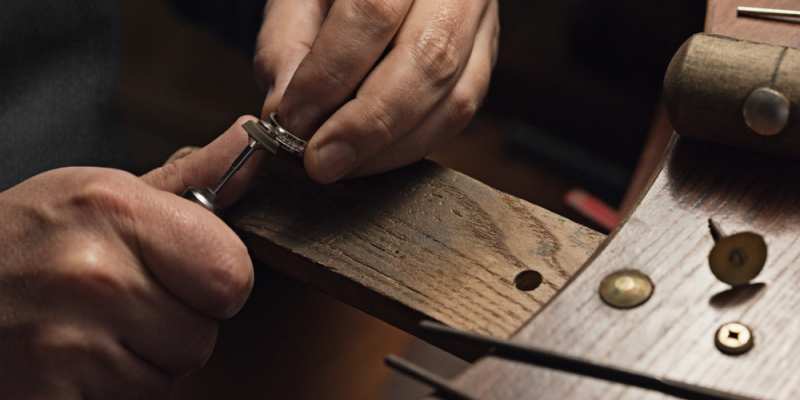
Consider Lower Clarity Grades
When it comes to a 1-carat diamond, having a flawless stone is not necessarily a requirement.
In fact, we advise against choosing diamonds with the highest clarity grades as they tend to increase the cost without significantly adding to the overall value.
If you have narrowed down the color and cut and still have plenty of options, we recommend opting for a diamond with a VS2 clarity grade. These stones will appear clean to the naked eye at a reasonable price.
If a VS2 clarity grade diamond is outside of your budget, there’s no need to worry. At 1-carat, most diamonds with an SI1 clarity grade are also eye-clean. This is true for many SI2 and even I1 graded diamonds as well.
It is advisable to avoid black inclusions near the center of the diamond as they tend to be the most noticeable.
For diamonds with lower clarity grades, it can be helpful to view the stones without high magnification, as the dark spots become less visible.
If you are considering diamonds in the clarity range of SI1 to I1, we recommend consulting with a diamond expert for guidance.
Narrowing or expanding your choices will depend on your specific preferences and budget.
If you find yourself with numerous options, it likely means you have a larger budget. In such cases, instead of focusing on higher clarity or color grades, you can consider increasing the carat weight. Gradually increase the carat weight in your search until you have a selection of around 25 to 35 diamonds, and then proceed from there.
On the other hand, if you have a smaller budget, things can become more challenging. You may need to loosen your criteria for clarity or color grades to have more options available.
If your diamond budget is under $3000, it may be difficult to find a well-cut 1-carat diamond. In such cases, if relaxing your clarity and color grade criteria still doesn’t provide acceptable options, you could consider a 0.90-carat diamond or even choose a diamond with a sub-par cut.
Keep in mind that even with a slight loss in carat weight, a well-cut 0.90-carat diamond can actually appear larger than a poorly cut 1-carat stone.

Find The Sparkliest 1-Carat Diamond
If you desire a stunning gemstone, finding one with exceptional sparkle is key to enhancing its overall beauty.
Look for a diamond that exhibits a good amount of fire and brilliance, as these qualities contribute to its sparkle. While the sparkle in the diamond’s crown may catch your attention, make sure to examine the center of the stone as well and ensure it also possesses a significant amount of sparkle.
To make an informed decision, compare several different stones before finalizing your top choice, and don’t hesitate to seek advice from a professional.
In addition to sparkle, there are other factors to consider when shopping for a 1-carat diamond ring. You might be inclined to limit your options to stones with excellent polish and symmetry, thinking it’s the better choice. However, in reality, it’s challenging to distinguish between stones with good and excellent polish grades.
Similarly, you may have heard negative opinions about fluorescence in diamonds. Rest assured that as long as you avoid diamonds with a very strong fluorescence grade, you won’t notice any significant difference.
Lastly, there’s a common belief that the Hearts and Arrows diamond cut is the best choice. However, this has little impact on the diamond’s performance and is more related to its symmetry rather than the quality of the cut. Unless you specifically prefer Hearts and Arrows, you can save money by selecting a different diamond cut that suits your preferences.
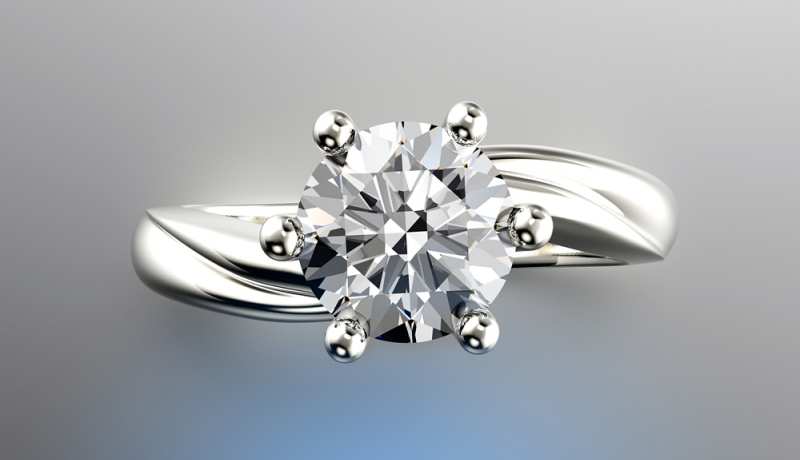
Conclusion
Wondering about the size of a 1-carat diamond? Well, a round brilliant cut diamond with ideal proportions typically measures 6.5 millimeters in diameter. However, it’s important to note that the size of other diamond shapes may vary.
Shapes like oval, marquise, and pear tend to have a larger surface area, while Asscher and princess cut diamonds are slightly smaller, with a table size of around 5.5 millimeters.
Although they may appear modest in size, a 1-carat diamond is still eye-catching. Remember, while carat weight and size are important factors, it’s equally crucial to choose a well-cut stone.
Additionally, when selecting a 1-carat diamond for your ring, consider the clarity and color grades as well. These aspects contribute to the overall appearance and beauty of the diamond.
We wish you the best in making the right choice for your diamond!


